Data base system - L4
目录
这篇文章展示了数据库系统的学习记录
Relational Algebra

1.1 SELECT σ and PROJECT π
1.1.1 SELECT
- SELECT operation (denoted by σ):
- Form of the operation: $σ_{c}(R)$
- Selects the tuples (rows) from a relation R that satisfy a certain selection condition c.
- The condition c is an arbitrary Boolean expression on the attributes of R
- Resulting relation has the same attributes as R.

1.1.2 PROJECT
- PROJECT operation (denoted by π):
- Form of the operation: $π_{L}(R)$
- Keeps only certain attributes (columns) from a relation R specified in an attribute list L.
- Resulting relation has only those attributes of R specified in L(subtable of R).

1.2 Select & Project
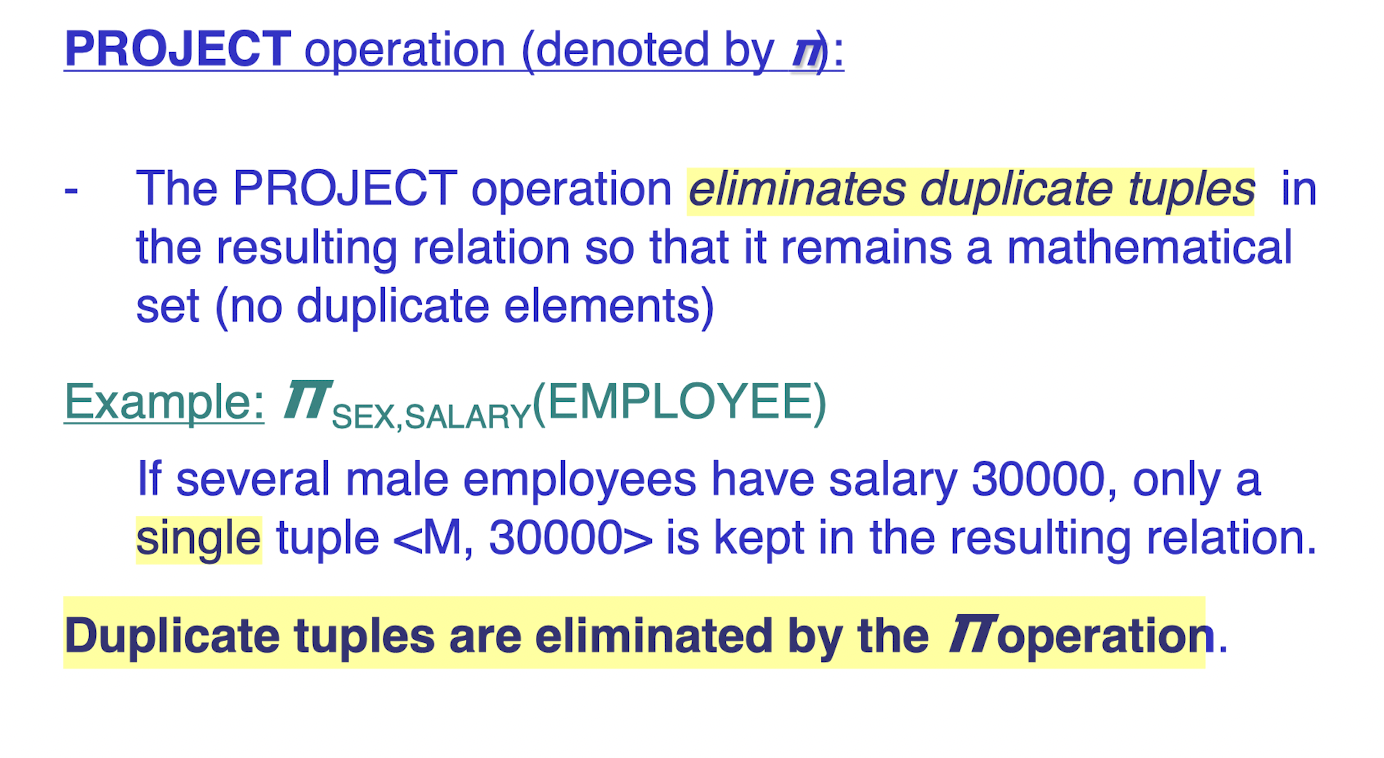
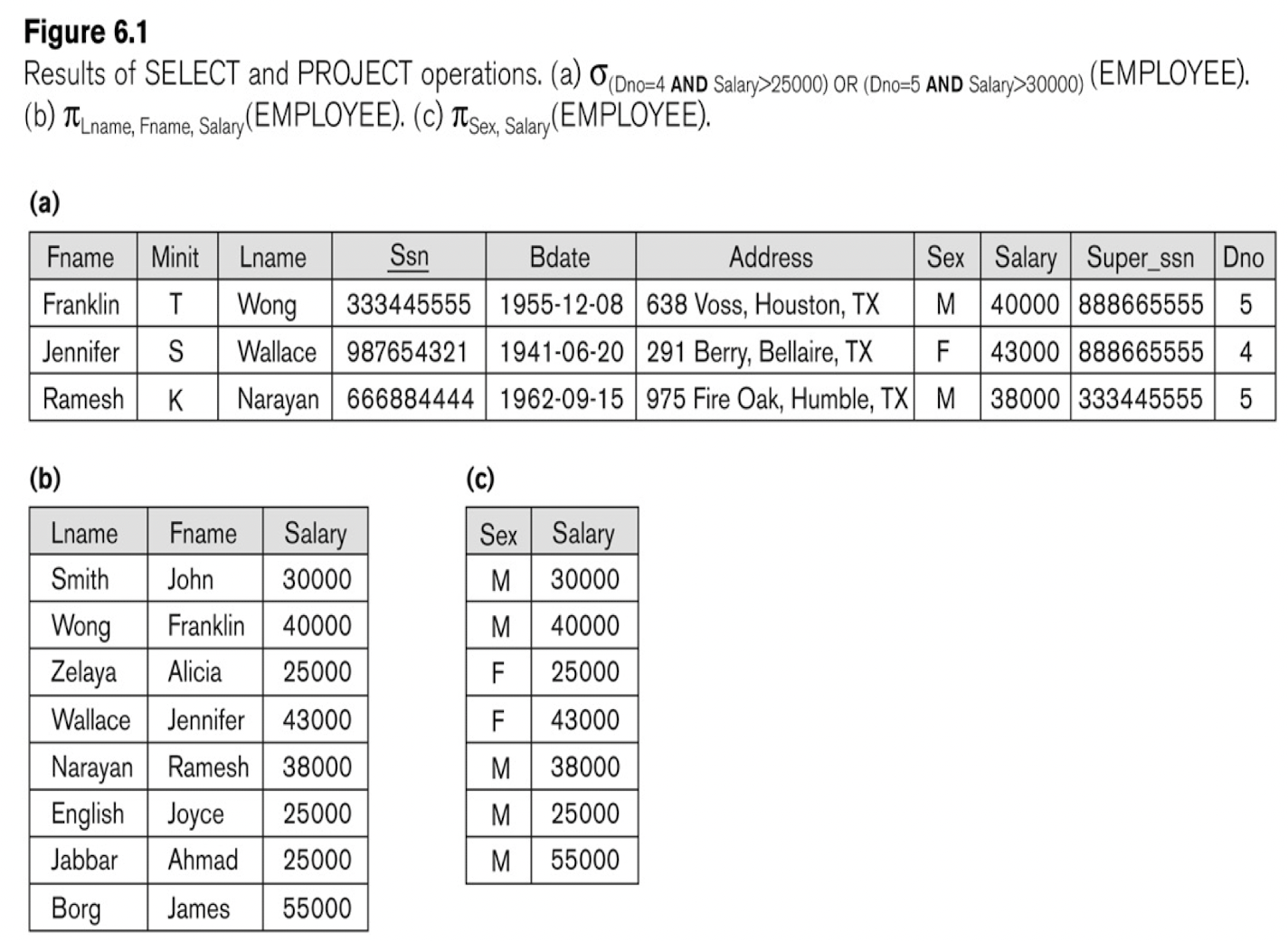

Not allow any duplicated for a combined attribute value (e.g. $\pi_{Sex,Salary}$ not allow the same combined attribute(Sex,salary), so the (F,25000) appears only once)
1.2.1 Combined Select and Project Operation
- Several operations can be combined to form a relational algebra expression (query)
EX: Retrieve the names and salaries of employees whon work in department 4 $π_{FNAME,LNAME,SALARY}(σ_{DNO=4}(EMPLOYEE))$ We also can specify explicitly: DEPT4_EMPS$\leftarrow$$σ_{DNO=4}(EMPOYEE)$ R$\leftarrow$ $π_{FNAME,LNAME,SALARY}$(DEPT4_EMPS)
1.2.2 Rename

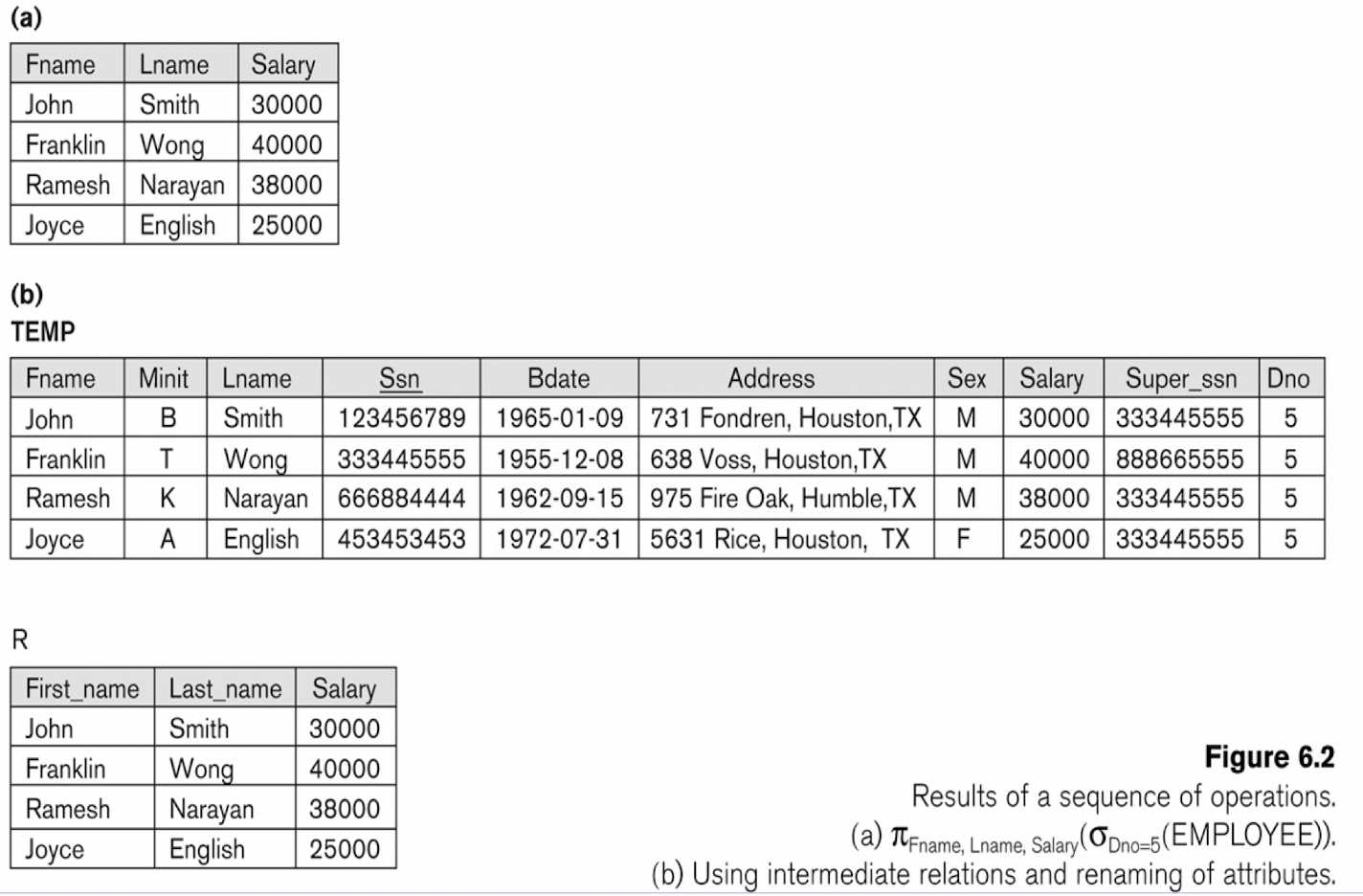
2.1 Set Operation
- For $\cap, \cup, - $
- The operand must have the same number of attributes
- The domain of corresponding attributes must be compatible(union compatibility)
- The resulting relation for $\cap, \cup, -$ has the same attribute names as the first relation R1
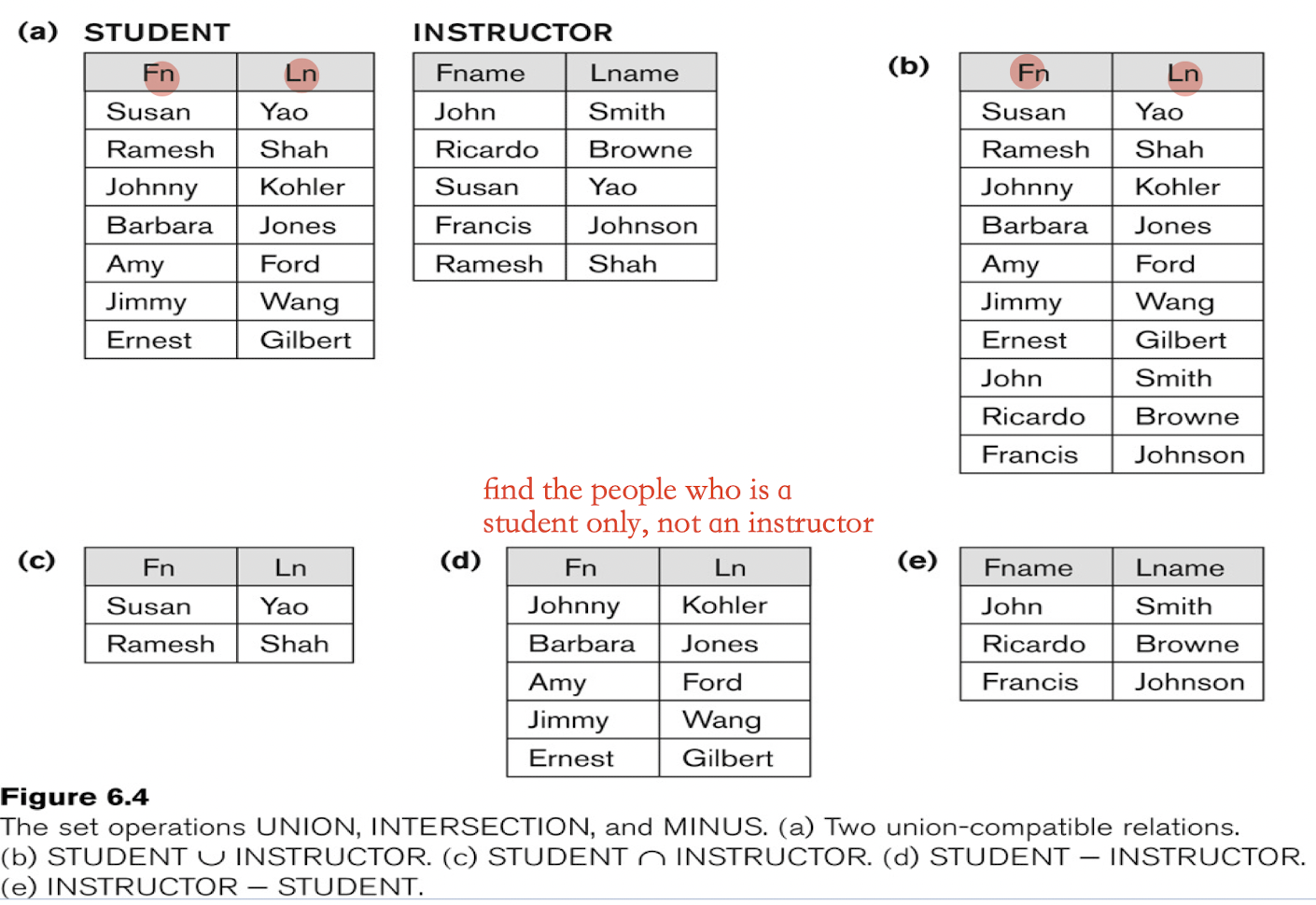
2.1.1 CARTESIAN PRODUCT
- R(A1,A2,A3,…,B1,B2,B3,…)$\leftarrow$R1(A1,A2,A3,…,Am) X R2(B1,B2,B3,…,Bm)
- If R1 has n1 tuples and R2 has n2 tuples, then R will have $n1*n2$ tuples.
CARTESIAN PRODUCT is a meaningless operation on its own. It can combine related tuples from two relations if followed by the appropriate SELECT operation.

The table EMP_DEPENDENTS has (3 x 7)21 tuples. To find the tuple which ESSN=SSN
3.1 JOIN OPERATION

3.1.1 Equal Join and Theta Join
-
Theta Join:
- Similar to a Cartesian Product followed by a Select. The condition c (often use θ) is called a join condition.
-
Equal Join:
- The join condition c includes one or more equality conparisons involving arrtibutes from R1 and R2.

3.1.2 Natural Join

- There shoule be some column have same attribute(s)
- Based on the same value of attributes, adding two table tigether directly
- Delet the column which has same attribute value

学习笔记,仅供参考
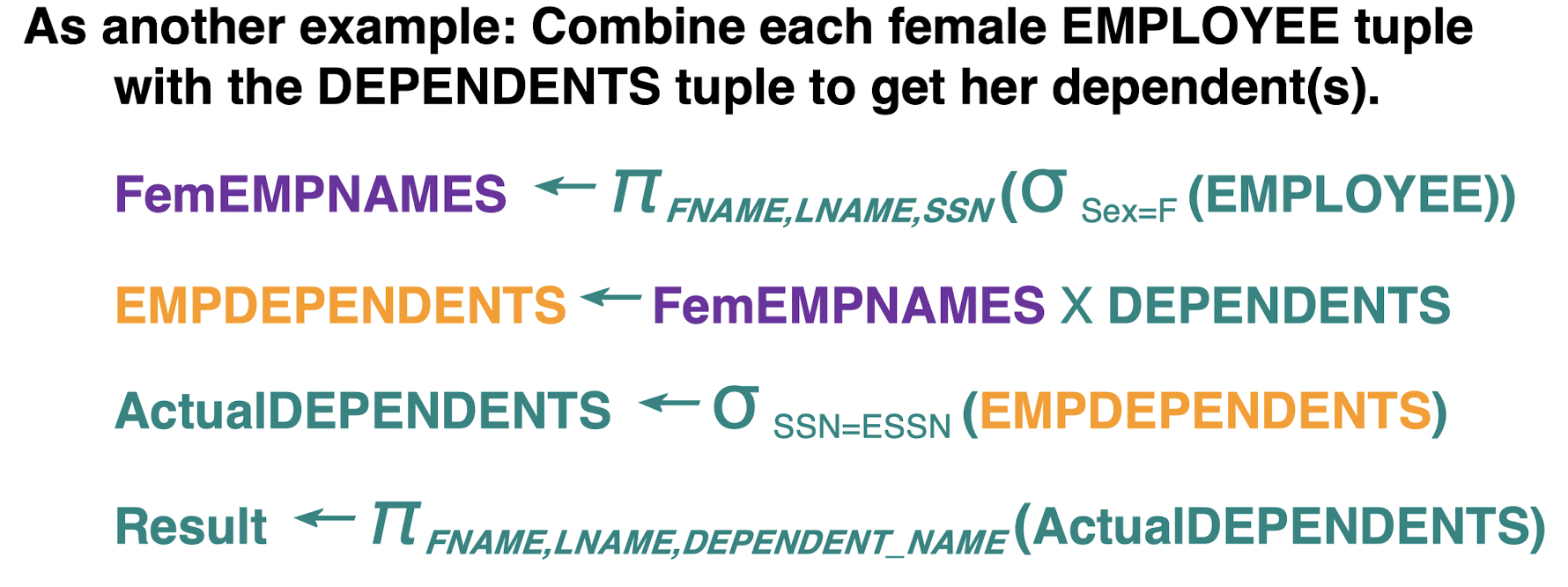
 The table EMP_DEPENDENTS has (3 x 7)21 tuples.
To find the tuple which ESSN=SSN
The table EMP_DEPENDENTS has (3 x 7)21 tuples.
To find the tuple which ESSN=SSN